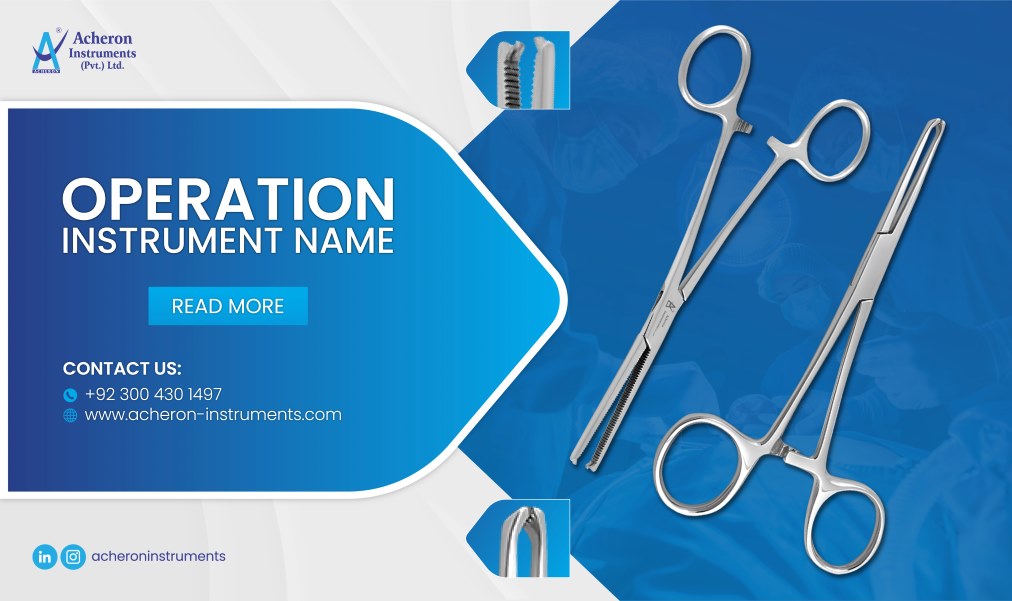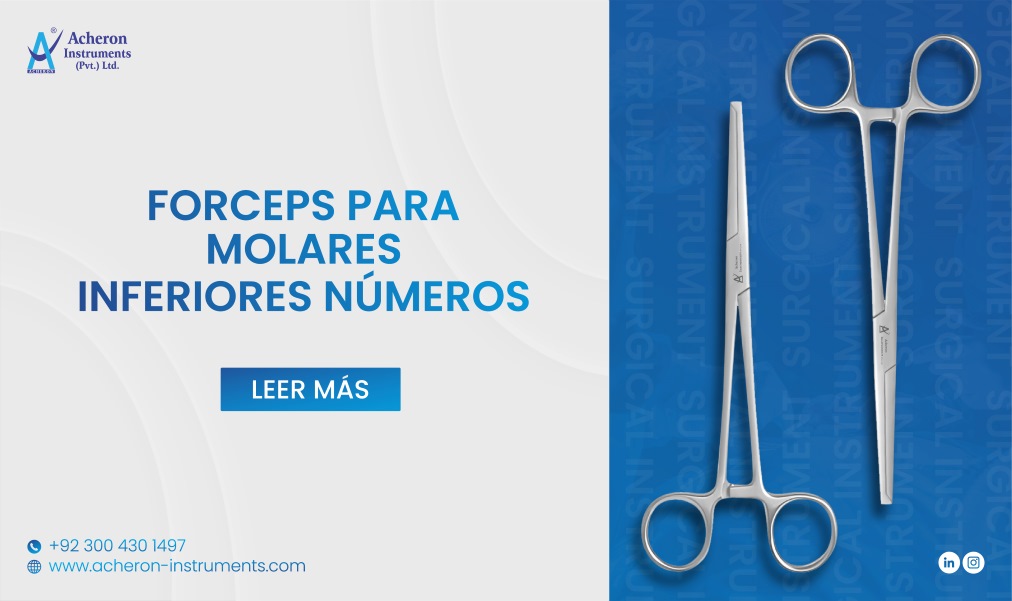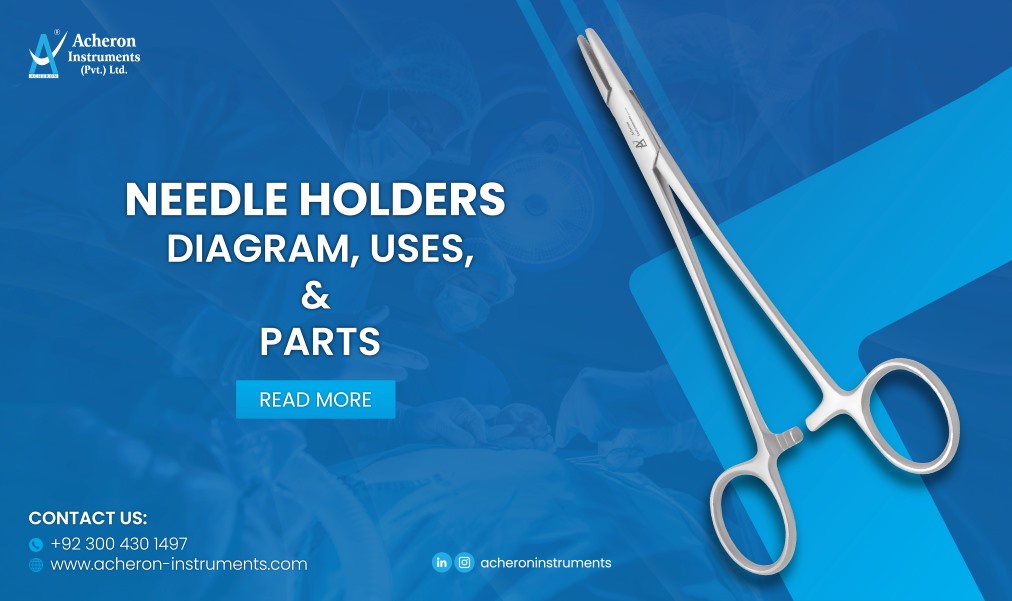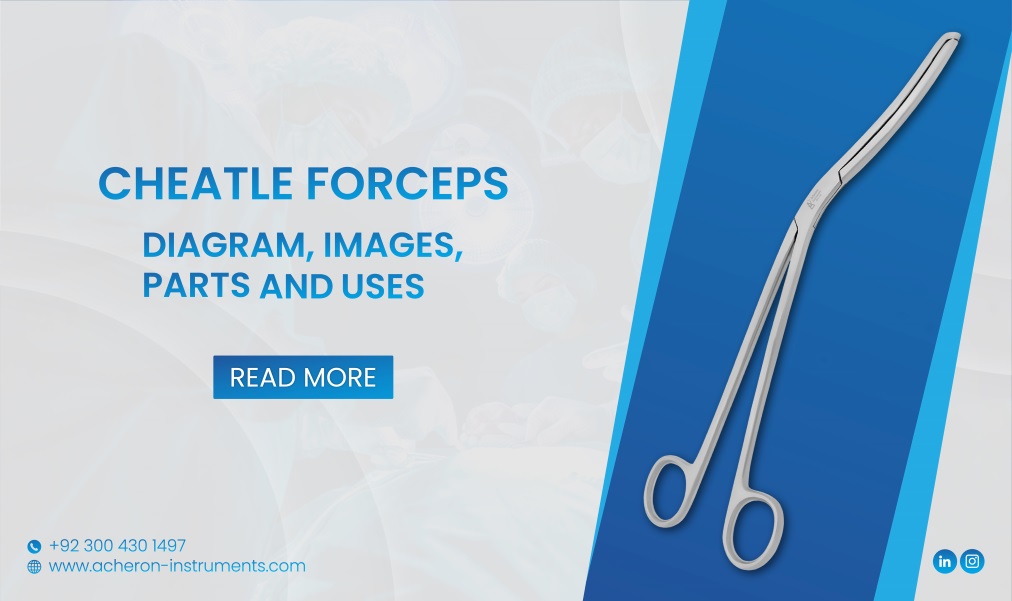Cesarean section instruments step by step-by-step guide is all about discussing the prime importance of these tools in surgeries. But first, let’s talk about what is a Cesarean section and why is it necessary.
Bringing a new life into the world is a momentous occasion that calls for careful consideration and planning. Cesarean section delivery is a surgical procedure in obstetrics where an incision is made in the abdomen and uterus of the mother to deliver the baby, Surgeons prefer this method when a vaginal delivery poses high risks to the health of the mother or the baby. Depending on the situation, doctors make the decision to deliver a baby through C-section before or after a 39-week gestational period. While the Cesarean section procedure is quite common and can be life-saving, this is a major surgical procedure that requires expert medical attention, the use of specialized surgical instruments, and careful consideration. In this blog, we will discuss Cesarean section instruments step by step to know their significance in these surgeries.
Significance of Cesarean section surgical instruments
Why need surgical instruments for this surgery? Can’t the surgery be done without the use of these tools? Absolutely not! One can’t even think of practicing these surgeries without the use of these surgical tools. These surgical instruments facilitate surgeons for a controlled, safe, and efficient delivery process. Moreover, these instruments allow healthcare professionals to address diverse fetal and maternal health considerations with expertise and precision.
Steps of Cesarean section delivery
Initially, a detailed assessment of the mother’s health is conducted. This includes reviewing medical history, checking vital signs, and administering anesthesia or injecting the spinal injection. Surgeons, anesthesiologists, and nurses create a sterile environment in the operating room for surgery preparation. When we talk about the step-by-step procedures of a Cesarean section, the order is as follows:
- Skin incision
- Abdominal wall dissection
- Uterine incision
- Delivery of the baby
- Removal of placenta and closure

Cesarean section instruments step by step in surgery
We are going to discuss a few of the most important surgical equipment that is used in C-section delivery. These common surgical instruments we are going to discuss are must-haves in C-section delivery instruments kit. Let’s have a look:
Skin Incision
In the first step, an incision is made through the abdominal wall. The incision is made horizontally just above the pubic bone. The primary tools for this step are:
Scalpel
Scalepls are essential tools used in the initial skin incision. The sharp blades of the scalpel are responsible for making sharp skin incisions with maximum precision. The most common type of scalpel handle used in C-sections is scalpel handle no. 3 and scalpel handle no. 4 that carries a wide number of scalpel blades. However, surgeons can mark various sites over the skin with the help of this tool.
Abdominal Wall dissection
Once the precise skin incisions are made, the next step involves dissecting the abdominal walls carefully to reach the uterus. This step requires sharp and blunt instruments that provide safe access to the uterine cavity and separate the skin tissues gently. Let’s discuss a few of them:
Metzenbaum scissor
These scissors comprise a long, curved, and slender design that becomes handy in Cesarean birth delivery. Metzenbaum scissors assist surgeons in the delicate dissection of scissors. These scissors are helpful for dissecting different layers of tissues including subcutaneous tissue, skin, and muscle layers. This, in turn, allows surgeons to have greater access to the abdominal cavity. Also, this tool aids surgeons in the dissection process leading to reduced postoperative complications and better healing.
.webp)
Mayo dissecting scissors
Apart from Metzenbaum scissors, one more dissecting scissor that holds significance during dissection is Mayo dissecting scissors. Mayo scissors come with semi-blunt tips and a straight design and are known for their versatility and strength. C-section delivery involves multiple layers of tissue dissection, these scissors can cut through the tough abdominal tissues, and abdominal wall layers, including fascia and muscle to gain greater access to the uterus.
Needle holders
Needle holders are crucial when it comes to C-section surgery. This surgical instrument assists surgeons to manipulate and secure needles during suturing procedures. These tools are also useful to grasp and control the surgical needle which in turn aids surgeons to close incisions and repair tissues. They do this by precisely placing and securing sutures. Moreover, this essential surgical tool provides a firm grip on the needle that allows surgeons to make accurate and controlled stitches.
There are multiple types of needle holders available and surgeons choose the ones based on their surgical requirement. The most common type of needle holder used is the Mayo Hegar needle holder. This type of needle holder is preferred because of its strong jaws that are suitable for heavy needles commonly used in C-section surgery. Additionally, large variations of this tool are suitable to suture deep tissues.
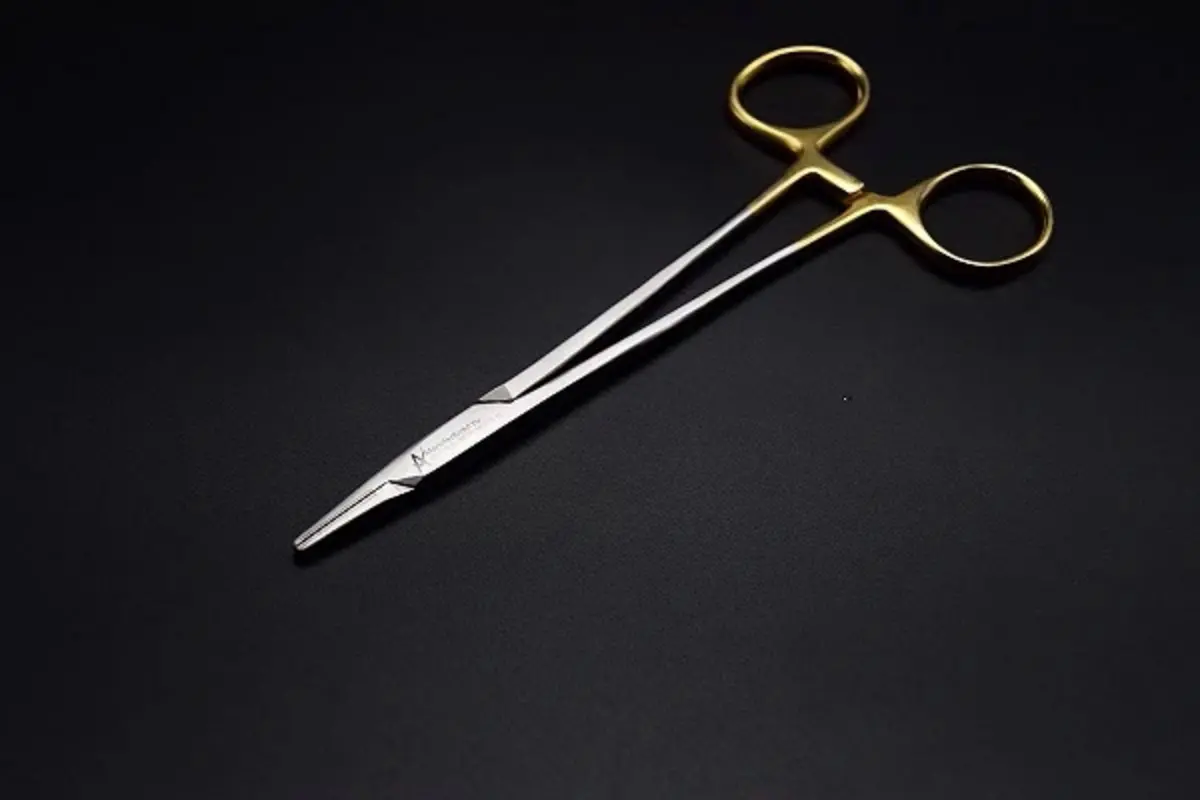
Uterine incision
Upon reaching the uterus, a specialized scalpel may be used to make an incision in the uterine wall. Surgeons make the decision of a low transverse incision or a vertical incision depending on the circumstances. Also, they make use of other surgical tools including retractors, clamps, and forceps to have a clear view of the surgical site as well as controlling excessive bleeding.
Foerster sponge forceps
These forceps come into action when surgeons need to hold the surgical dressings and sponges. Also, these forceps also clear up the surgical view by absorbing excessive fluids during surgical procedures. The oval fenestrations of this tool allow a firm grasp on the surgical dressings. Moreover, surgeons also hold and mobilize these dressings and sponges easily with the help of this tool.
Dressing forceps serrated
Dressing forceps come in handy in multiple steps during C-section surgery. While making incisions in multiple layers of skin, there is a great amount of fluid and blood that makes the operating site messed up and difficult to work on. Dressing forceps come into use for clearing up the site by cleaning the incision site by holding the dressings and cleaning the site while holding and manipulating the dressings.
Crile hemostatic forceps
These forceps are essential to achieve hemostasis. These forceps have a scissor-like design with serrated jaws that provide a firm grip. Also, these forceps assist surgeons in clamping the blood vessels by stopping the blood flow temporarily. This in turn helps prevent excessive bleeding during the surgery. Not only that, these forceps can also be helpful in grasping, manipulating, and dissecting the tissues. This way, surgeons get access to the uterus conveniently and deliver the baby safely. Moreover, these incredible forceps also help with suturing assistance.
Doyen retractors
Doyen retractors have a specialized design that serves multiple benefits during C-section surgery. This retractor assists surgeons in gently retracting the abdominal wall and other tissues allowing optimal exposure of the uterus. In some cases, surgeons use a Doyen retractor to help displace the bladder gently. This is important in C-sections to access and deliver the baby without interference from the bladder.
Baby Frabeuf retractor
This retractor has a double-ended design that could be helpful for surgeons in certain cases. This versatile tool is known to retract tissues, abdominal walls, and bladder displacement for better accessibility to the surgical site. Also, surgeons can choose the most suitable end or combination of ends based on the specific need of the surgery and the patient's anatomy.
Delivery of the baby
Once the uterine incisions are made, the baby is then delivered carefully. This requires the use of some specialized surgical tools.
Rochester Oschner forceps
These forceps are useful to gently guide and assist in the surgical delivery of the baby through the incision. This is particularly helpful if the baby's position makes it challenging for the medical team for a straightforward delivery.
Outlet forceps
These forceps are one of the most essential ones while delivering the baby. These obstetrical forceps are useful to grasp the baby's head and facilitate its passage through the birth canal. Moreover, these forceps can be used to guide and rotate the baby’s head into a more desirable position for delivery. However, It's important to note that the decision to use outlet forceps during a C-section is typically made by the attending obstetrician based on the delivery circumstances. The use of forceps requires experience and skill to ensure the safety of both the mother and the baby.
Langenbeck retractor
This retractor is useful when surgeons need access to the uterine cavity. This surgical tool also ensures a clear view of the surgical site for the delivery of the baby. Also, this retractor assists surgeons in closing the rectus sheath during C-section delivery. This retractor comes in multiple sizes with sharp and blunt blades that make these tools versatile in nature.
Backhaus towel clamp
This surgical instrument is used to secure surgical drapes and towels. These non-perforating towel clamps have a special design that does not puncture or damage the material they hold. Also, this clamp features a pointed tip that penetrates the fabric and secures it in position.
Removal of placenta and closure
Once the baby is delivered safely, the final step is the removal of the placenta and closing the incisions. The surgeon uses a combination of instruments, including sutures, clamps, forceps, and staplers, to secure the incisions and control bleeding. Absorbable sutures are generally used for closing the uterine incision and the various layers of the abdominal wall.
Spencer ligature scissor
Surgeons use this surgical scissor during the suturing procedure. This instrument features a small hook on the tip of the blade that can slide under the suture easily to lift it. Additionally, this tool also assists in cutting them conveniently. Also, this tool is available in multiple sizes to aid medical practitioners according to their surgical requirements.

Conclusion
Cesarean section delivery is a major surgical procedure that involves the use of multiple surgical instruments. From the initial skin incision to the final closure, each step requires precision and expertise from the surgical team. These surgical tools ensure the safety of both the baby and the mother by making the surgical procedure perform better for the surgeons. Also, these surgical tools facilitate a controlled, safe, and efficient delivery process. However, the choice of surgical tool is based on the patient's anatomy, surgeon's experience, and the specific circumstances of the C-section.
It's also worth considering that surgical instruments are carefully selected and utilized in a sterile environment. This minimizes the risk of infection and promotes a safe delivery for both the mother and the baby. We have mentioned a few of the most important surgical tools used in C-section delivery. However, there are many others that can be chosen by surgeons based on their specific surgical needs.
If you are looking for C-section surgical instruments, you surely don’t want to compromise on quality! We at Acheron Instruments provide a vast range of surgical equipment made with high-grade German stainless steel material. Our high-quality products are easily sterilizable and can be reused. Not only this, our high-quality products are durable, and robust and don’t wear off easily because of high-grade stainless steel. visit our product page now to explore our incredible range that’s surely going to impress you!
FAQ’s
Does Acheron Instruments offer medical equipment other than C-section surgical tools?
Yes, we have an extensive range of high-quality including surgical surgical instruments including forceps, scissors, retractors, etc. to suit multiple surgical approaches.
Does Acheron Instruments offer bulk orders?
You can contact us via email or the contact number given on our page. Our representative will answer all your queries shortly.


